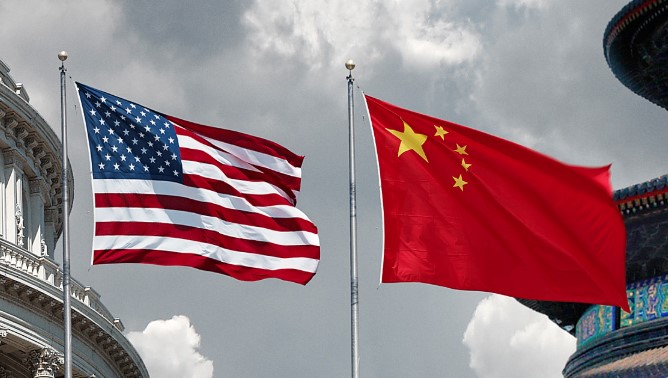A shocking discovery has revealed that the U.S. Department of Defense (DOD) and Department of Energy (DOE) have supported more than 100 research projects using Chinese supercomputers banned by the U.S. government. These supercomputers, located in Beijing, Changsha, Guangzhou, Shenzhen, and Tianjin, were sanctioned by the U.S. Department of Commerce (DOC) for their involvement in China’s military development.
Banned Chinese Supercomputers Used in U.S. Research
Despite these sanctions, researchers from U.S. national laboratories and universities continued working on these platforms, potentially exposing sensitive technology to the Chinese Communist Party (CCP). Some of these projects involved dual-use technology, meaning they had both civilian and military applications, such as space weather modeling and nuclear research.
Lawmakers and intelligence analysts have raised serious concerns about the potential risks. Representative John Moolenaar, chairman of the House Select Committee on the CCP, called it “unacceptable” that U.S. researchers were still using Chinese supercomputing centers that have been blacklisted for their military ties. He warned that these computers have been instrumental in China’s hypersonic missile and nuclear weapons programs, which directly threaten U.S. national security.
U.S. Research Projects Linked to Chinese Military Networks
According to a review by the Daily Caller News Foundation (DCNF), several federally funded research projects not only used these sanctioned supercomputers but also had co-authors from Chinese institutions that serve the Chinese military. These institutions include universities that operate under China’s Central Military Commission, which oversees the country’s armed forces.
The DOC had originally sanctioned these Chinese supercomputing centers for engaging in activities contrary to U.S. national security interests, specifically regarding weapons of mass destruction. The sanctions prohibit U.S.-origin technology from being exported to these entities. However, national security experts warn that a loophole allows Chinese researchers to access U.S. research by having China-based collaborators run simulations on these banned supercomputers.
Former U.S. Air Force intelligence analyst L.J. Eads pointed out that this loophole allows Pentagon and DOE researchers to outsource their work to China, enabling the transfer of U.S. technology through indirect means. He explained that while U.S. researchers may not be directly working on Chinese supercomputers, their data and research findings could still be processed by these banned entities through their Chinese partners.
The research projects covered a range of topics, including space physics, atomic interactions, and hydrogen production—many of which have potential military applications. For example, in October 2020, a research project funded by the Pentagon and involving a U.S. professor used the TianHe-1 supercomputer in Changsha, despite it being blacklisted five years earlier for its role in nuclear weapons development. Another study in 2024, also funded by the DOD, examined hydrogen production, a field that could contribute to nuclear energy advancements.
U.S. National Labs Deny Direct Use but Evidence Suggests Otherwise
Some of the most prestigious national laboratories in the U.S., including Argonne (ANL), Los Alamos (LANL), and Oak Ridge (ORNL), have been involved in at least 77 research projects using these sanctioned Chinese supercomputers. These labs played a key role in developing America’s nuclear weapons program during the Manhattan Project.
ANL, based in Illinois, has been linked to at least 29 such projects. One DOE-funded study in 2020 focused on optimizing memory storage for supercomputers and used the TianHe-2 supercomputer in Guangzhou. ANL researchers also collaborated with personnel from the National University of Defense Technology (NUDT), which was sanctioned in 2015 for its involvement in nuclear explosive activities. ANL stated that their researchers had not personally used these banned computers but did not clarify whether China-based collaborators had accessed them.
LANL, in New Mexico, has been involved in at least 22 research projects using banned Chinese supercomputers. A 2022 DOE-funded study on spacecraft physics used the TianHe-2 supercomputer and included personnel from Beihang University, another institution sanctioned for its ties to China’s military. A LANL spokesperson admitted that some of their researchers participated in “scientific interpretation” or collaborated on fundamental science with teams that used these sanctioned systems.
ORNL, based in Tennessee, has been part of at least 26 research projects using banned Chinese supercomputers. A 2018 DOE-funded project investigating the production of an exotic material called graphane, which could have applications in solar cells, acknowledged using the TianHe-2 supercomputer in Guangzhou. ORNL also denied violating U.S. regulations but admitted that Chinese collaborators had used Chinese computers to analyze data from their research.
Security analysts warn that these collaborations present a major risk to U.S. national security. The CCP has a strategy known as “Military-Civil Fusion,” which aims to exploit scientific research with both civilian and military uses. Experts believe that sensitive U.S. research shared with Chinese collaborators could be repurposed to strengthen China’s military technology.
Rep. Moolenaar stressed that loopholes in existing regulations have allowed these dangerous partnerships to persist, and he called for immediate action to prevent further exposure of U.S. research to China’s military-industrial complex.

